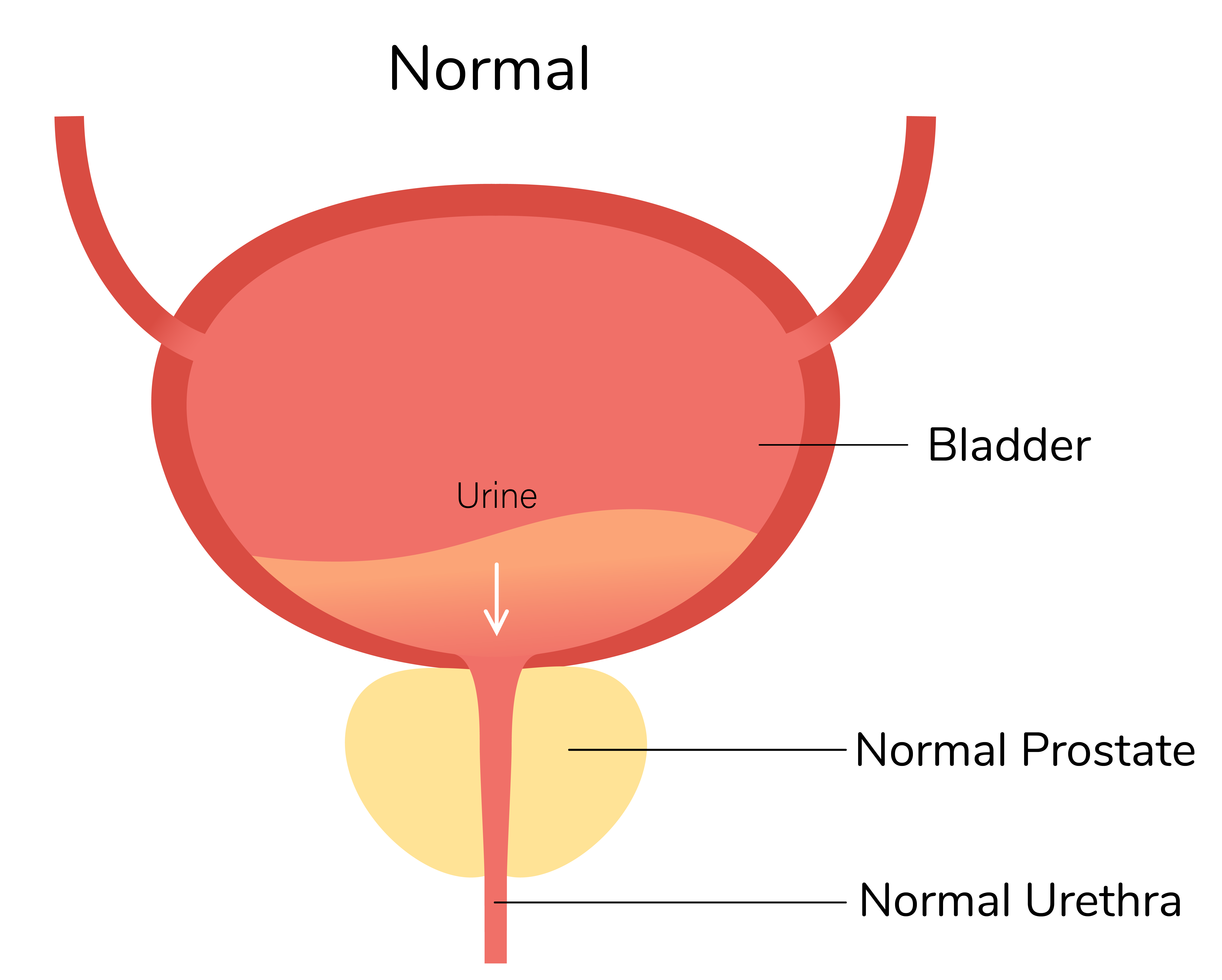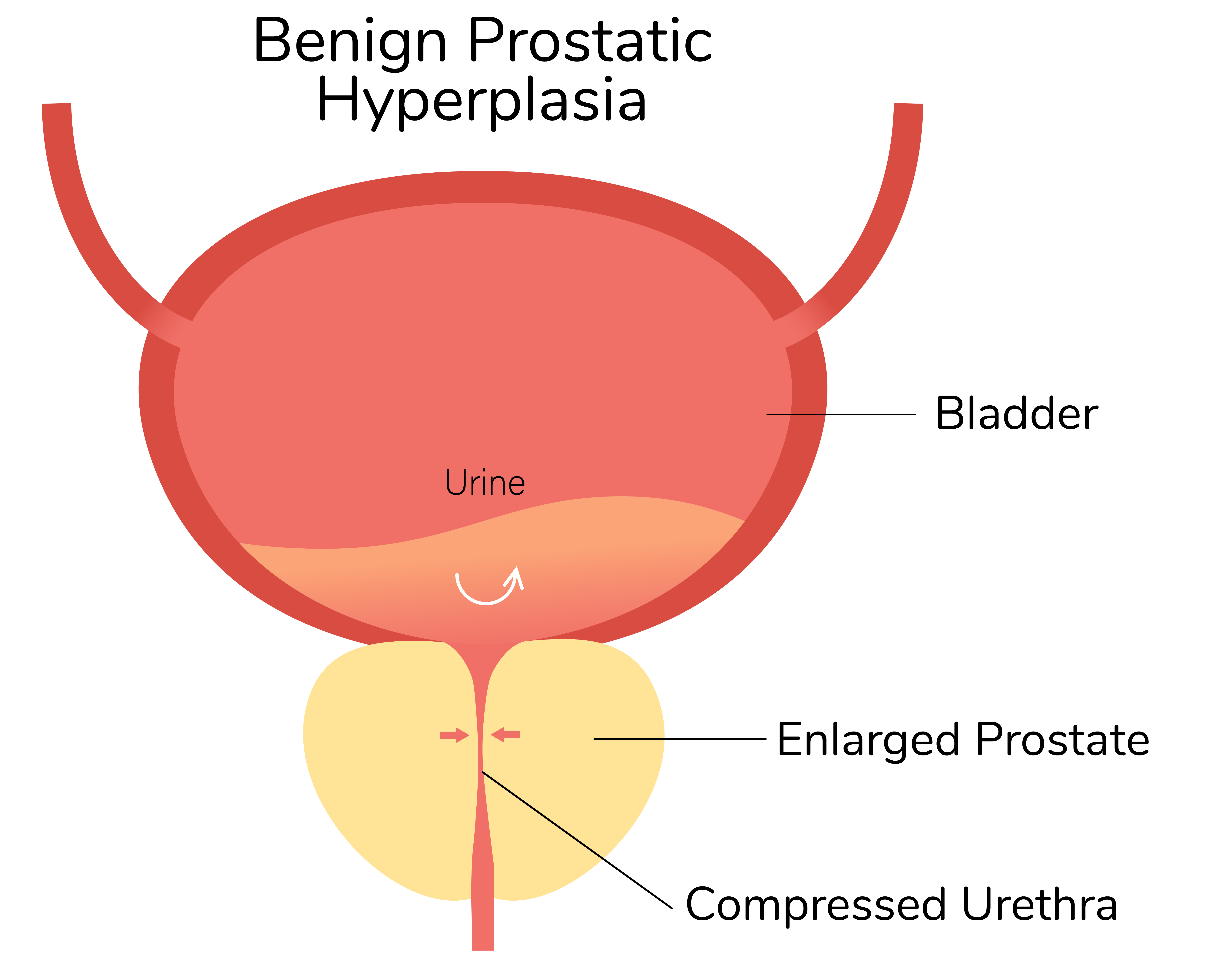Find A Doctor
menMD can help you connect with a provider
Have Questions?
- (857) 233-5837
M-F 8am-9pm EST
Sat 9am–5:30pm EST

The prostate gland sits underneath a man’s bladder and surrounds the urethra. Its primary role is reproductive in nature, providing a key component of a man’s ejaculate. Benign prostatic hyperplasia (BPH) is age-associated prostate enlargement. BPH is non-cancerous and does not lead to cancer. That’s the good news. However, BPH can cause uncomfortable urinary symptoms and complications related to obstructed urinary flow.
Men who have fathers with BPH are more likely to develop BPH
Prostate growth varies in severity from individual to individual. Some men have extremely large prostates, causing multiple symptoms. Other men have mild enlargement with no symptoms at all. As with many other conditions, genetics are usually to blame. Meaning, men who have fathers with BPH are more likely to develop BPH as well.
As the prostate gland enlarges, it generally grows into the urethra and blocks the flow of urine out of the body. Like a clogged pipe. It’s the blocked urethra that causes the symptoms of BPH.


Symptoms include:
These symptoms vary in severity from person to person, depending on the size of the prostate and the way that it grows around the urethra. Some men suffer from all of the symptoms mentioned above, while others experience just one or two symptoms.
Severe, long lasting, or untreated BPH can lead to serious complications. Some men develop acute urinary retention, which is a sudden inability to pass urine. This usually requires a doctor to place a catheter to drain the urine. Chronic lack of normal urinary flow and incomplete bladder emptying can also lead to kidney and bladder damage, recurrent urinary tract infections, and bladder stones.
BPH and ED often co-exist in the same patient population because increasing age is a common risk factor for both
There are many ways BPH can affect sexual health. BPH and ED often co-exist in the same patient population because increasing age is a common risk factor for both conditions. Recent studies have also shown a direct link between symptomatic BPH, increasing prostate size, and erectile dysfunction.
Two medicines often used to shrink the prostate are finasteride and dutasteride. Some patients taking these medicines experience loss of libido and impotence.
Retrograde ejaculation…the semen is still released but travels the wrong way
Other commonly used medicines used to improve urinary flow such as tamsulosin and silodosin can result in a decrease or complete absence of ejaculation. This is called retrograde ejaculation, because the semen is still released, but travels the wrong way, to the bladder rather than to the outside of the body. The patient still has an orgasm, but less or no semen is released.
Although most surgical options for BPH do not result in impotence or loss of libido, many do lead to retrograde ejaculation. Some common surgical treatments known to cause retrograde ejaculation include:
These procedures remain the gold standard for BPH treatment because they are most effective in relieving urinary blockage and bothersome BPH symptoms, regardless of the known sexual side effects.
In the past decade new treatment options have become available for BPH. Daily tadalafil (Cialis®) is now FDA approved for the treatment of BPH. This medication is a great option for men who have both urinary symptoms and erectile dysfunction. Normal ejaculation and libido are preserved with daily tadalafil use. Tadalafil can also be combined with other medicines used to treat BPH.
Tadalafil is a great option for men who have both urinary symptoms and erectile dysfunction
For men who have severe urinary symptoms or are unable to tolerate the aforementioned medicines there are minimally invasive treatments. These treatments seem to have less sexual side effects than the traditional surgical options including:
UroLift – utilizes tiny implants that look like flexible staples to lift and hold the enlarged prostate tissue out of the way of the urethra
Rezum – utilizes water vapor energy to destroy prostate tissue that surrounds the urethra
Aquablation – utilizes high-pressure saline solution to remove prostate tissue
The goal of these procedures is to allow better flow of urine from the bladder through the urethra after the obstructive prostate tissue is moved away or destroyed.
The choice of therapy often depends on the size and anatomy of the prostate. Unfortunately, not all patients benefit from the minimally invasive options listed above and need a more traditional surgical approach. As a urologist, my job is to evaluate BPH and provide the best treatment option keeping the patient’s sexual function and goals in mind.
If you’re suffering from the symptoms of BPH speak to a urologist to confirm the diagnosis and understand the best treatment option for you.
As a token of completion for reading this far in the article we would like to offer you a discount for our OTC Product line. Use the discount code PROSTATE10 to save 10% on your purchase in the menMD Shop.
Stay up to date with menMD by following us!
Urologist
Mystic Valley Urological Associates
lahey.org/yanina-barbalat
800 W Cummings Park, Ste 6550
Woburn, MA 01801